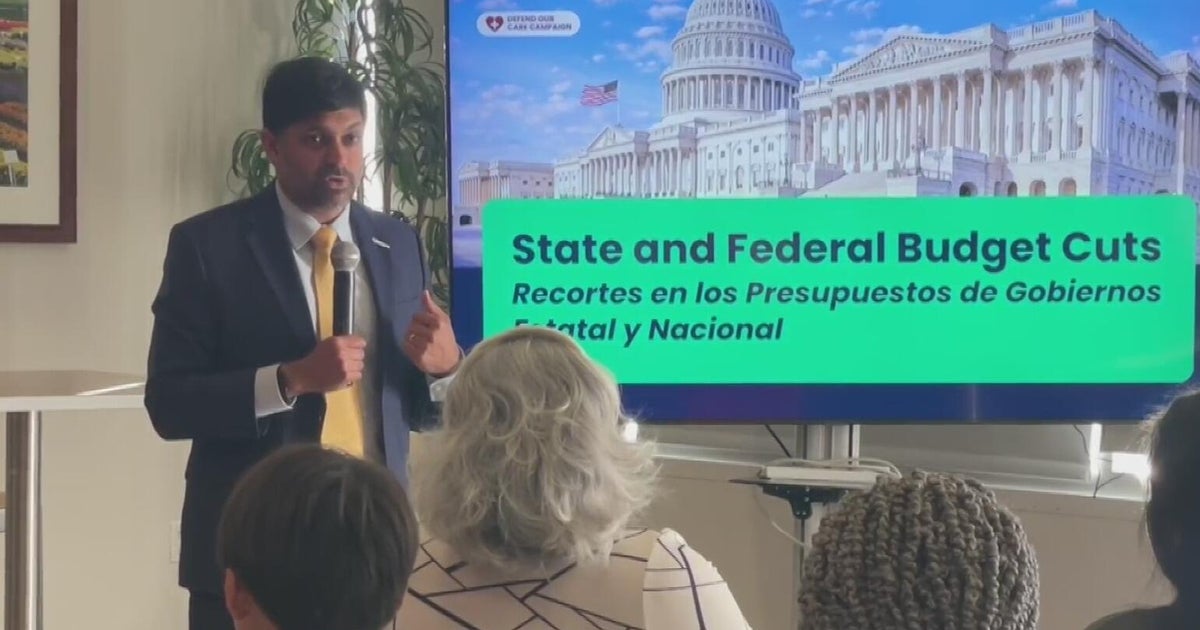UPDATE U.S. Drought Monitor Puts Most of Bay Area Under Extreme Drought Conditions
SAN FRANCISCO (CBS SF) -- The latest California drought update just released Thursday by weather officials puts most of the Bay Area in the red under what is classified as extreme drought conditions.
The latest drought classification from the U.S. Drought Monitor keeps Napa County at the D3 or extreme drought level with an expansion of D3 conditions across all of Sonoma, Marin, Contra Costa and San Francisco counties.
D3-extreme drought conditions were also expanded across much of San Mateo and Alameda counties, and the northern portion of Santa Clara County. The less serious D2-severe drought classification persists across the southern portion of San Mateo County, the southeast portion of Alameda County and the majority of Santa Clara County, according to the National Weather Service.
A map tweeted out by the Bay Area office of the National Weather Service showed how the area of extreme drought had expanded in just a week.
D2-severe drought classification remained unchanged this week across Santa Cruz County as well as the northern portions of Monterey and San Benito counties. The remainder of Monterey and San Benito counties remain unchanged under D1 or moderate drought conditions.
This year's extremely dry winter and spring made for the second year in a row of below average precipitation, with the region looking at 37% to 40% of average for the water year. The Sierra snowpack is at 27% of average for North Sierra, 34% in the Central Sierra and 14% for the South Sierra. All in all, the Sierra snowpack is at 26% of its average total.
Looking ahead on the weather front in the Bay Area, there is little change over the next few days with a high-pressure system in place keeping the region from getting any rain any time soon.
The designation at the D3-extreme drought level for much of the Bay Area means residents can expect more water restrictions soon.
On Thursday, the San Francisco Public Utilities Commission asked for a 10 percent voluntary reduction in use from its irrigation customers and a similar request for city departments, while reminding San Franciscans to maintain efficient use and avoid water waste indoors and outside.
Other parts of the Bay Area have already taken steps toward voluntary reduction of water use, with the East Bay MUD Board of Directors declaring a stage 1 drought for the water district and the Sonoma County Board of Supervisors approving a resolution declaring a drought emergency on Tuesday.
The East Bay is using 30% less water than in 2013 according to East Bay MUD officials, but there is always room to conserve more.
Voluntary water conservation isn't a new concept to Bay Area residents, but it is certainly not the news anyone wants to hear.
"I try not to think about it. I am in denial and I've lived through it too many times," one customer at Western Garden Nursery in Pleasanton told KPIX.
"It's not the first time and it's probably not the last time we have to deal with this," said Western Garden Nursery manager Aires Souto.
"East Bay MUD water supply is not enough to make it through this year," EBMUD spokesperson Andrea Pook said, noting that voluntary water conservation is the first step.
Pook suggests residents check for leaks in their irrigation system and consider replacing lawns with landscaping that requires less water.
Santa Clara County officials went further, calling on residents to voluntarily cut water use by 25% on Tuesday.
Last week, Gov. Gavin Newsom declared a regional drought emergency for the Russian River watershed in Mendocino and Sonoma counties in response to the dry conditions affecting much of the state.
The drought declarations come just six years after California clawed out of its most recent drought. Then there was the other drought in recent memory.
"'76-'77 was a two-year drought," said Jay Lund with the UC Davis Center for Watershed Sciences. "It included the driest year on record in California. And it really caught people by surprise. It was the first big drought since the 1930s."
The drought of the 1976 and 1977 was also the first drought after much of the state's water system was constructed. A lot of people thought the state had built its way out of drought and the severe shortages prompted significant conservation moves.
More California residents will remember the drought that hit its crescendo in 2014 and 2015, but that was not the result of just two dry years. It was a handful of dry winters, a couple of moderate rainfall years, and then more dry years. It accumulated over a good part of a decade.
What California is seeing now is more of a crash drought: two years that were even dryer than 2014-2015, and the state's largest reservoirs are already suffering for it.
"When I saw those reservoir levels down as low as they were...In 2014 and 2015, which was the third and fourth year of the previous drought; Here it's only the second year of this drought. That really got my attention," Lund explained.
The drought also has the attention of water agencies across the region, who generally have reserves built in for at least a year or two. But conditions could always get worse. The message in the short term for urban areas: drought is here and water squeeze is coming.
"They need to worry, but they don't need to panic," Lund said of most California residents. "Whereas some areas, particularly agriculture and ecosystems, they are really the most vulnerable areas."
Juliette Goodrich and Wilson Walker contributed to this story.



